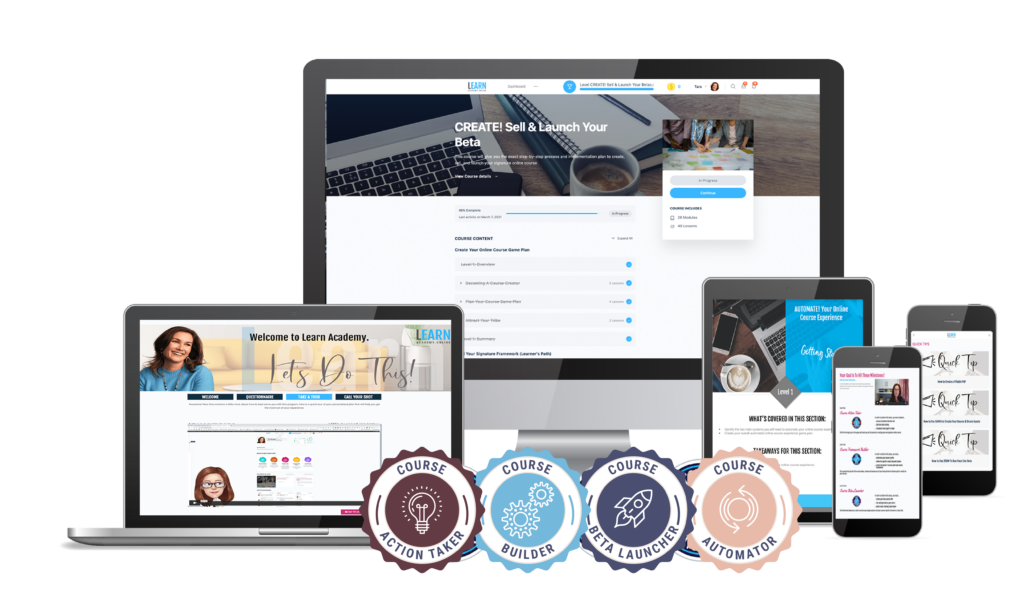Why You Can’t Wait to Scale
Most service providers wait for the “perfect” moment to start building a scalable business model—when they finally finish all their client projects, get a break, or hire more help.
But here’s the truth:
That moment rarely comes.
If you’re like most small business owners, you’re busy delivering amazing work for clients… and barely have time to think about your current un-scalable business model. Yet deep down, you know continuing this way isn’t sustainable (or enjoyable). You want more time, more freedom, and more income that isn’t directly tied to how many hours you work.
The good news?
You can build a scalable business model while managing client projects.
This blog post gives you a realistic action plan to help you shift your mindset, time-block your week, and productize your services—so you can start building leverage without walking away from your current income.
Let’s get into it.
Part 1: The Mindset Shift You Must Make to Create a Scalable Business Model
Before you change your schedule or create a new offer, the most important shift is in your identity and intention.
And trust me, this is still something that isn’t completely natural for me. I have found it helpful to put a daily reminder on my desk.
Right now, you’re wearing the “Doer” hat. You’re the expert your clients rely on. But to scale, you need to start stepping into the “Architect” role—someone who designs the business, not just works inside of it.
Key Mindset Shifts:
- From Custom to Repeatable: Instead of creating something new every time, ask, “How can I reuse this process?”
- From Busy to Intentional: Being busy isn’t the goal. Creating consistent, leveraged results is.
- From Perfection to Progress: Done is better than perfect. You’re testing as you go, not building the Sistine Chapel.
Weekly Reflection Prompt:
What tasks did I do this week that I could document or delegate next time?
This is a question we ask each of our clients who are in the Learn Academy Mentorship to help them stay connected to the bigger goal.
That question alone can start pulling you out of the cycle of reactive work and into the mindset of scalable growth.
Part 2: Time Block Like a CEO (Even With a Full Client Load)
You don’t need a 40-hour blank slate. You need a smart container.
Time-blocking is how you protect time for building your future business—without burning out or neglecting your current clients.
Step 1: Know Your Weekly Time Budget
- Add up your client delivery hours.
- Include admin, meetings, and personal obligations.
- Whatever is left, block 5–10 hours/week for “Business Building” tasks.
Example:
- 30 hours client work
- 5 hours admin
- 5–10 hours → Build the scalable side
You may need to tighten your delivery hours or reduce scope. That’s okay. Your goal is to make just enough space to start building momentum.
NOTE: This is also a great time to re-evaluate your lifestyle goal for why you started your business in the first place – a scalable business model allows you to CONTROL your time. This will start the shift in the right direction so the momentum will move you forward.
Step 2: Use the “Power Hour” Daily Block
Even 60–90 minutes/day adds up.
Use it for:
- Capturing your process
- Creating templates
- Writing out your framework
- Building your sales assets
- Prepping for your next scalable offer
Tip: Use calendar color codes—green for client work, blue for scalable business, red for deep focus.
Part 3: How to Productize What You’re Already Doing for Clients
You don’t need to invent something new. You just need to package what you’re already doing in a way that scales.
Here’s how.
Step 1: Identify Your Repeatable Work
Ask yourself:
- What parts of my service do I do over and over?
- Are there questions I always answer?
- What gets my clients the fastest wins?
Example:
If you’re a branding expert and always guide clients through brand voice exercises—those steps can become a workbook, video series, or group experience.
Create a list of these tasks and outcomes. These are your first opportunities for productization.
Step 2: Turn Your Process Into a Authority Framework
Break down your service into phases or steps. Give each step a name and define the transformation.
Example Framework: “Brand Voice Accelerator”
- Clarify → Interview & Audit
- Codify → Define tone, language, and visuals
- Amplify → Use templates to apply it everywhere
People buy frameworks. When you give your method structure, it becomes easier to package, sell, and scale.
Step 3: Choose Your Scalable Delivery Format
Depending on where you are in business and time availability, pick one of these scalable formats:
| Format | Description | Best for |
|---|---|---|
| Workshop or Intensive | One-time event teaching part of your process | Validate your framework |
| Scalable Digital Program | Small group or simulated group following your framework with support | Transition from 1:1 |
| Digital Product | Self-paced toolkit or system | Passive income, lead magnet |
| Licensing/Certification | Train others to use your method | Advanced stage |
Step 4: Start Small with a Beta
Don’t build it all first—sell it before you build it.
Outline your framework, create a landing page, and invite 3–5 clients into a beta experience. Offer them:
- Bonus 1:1 time
- their feedback will help shape the offer
This gives you confidence, real results, and testimonials you can use to grow.
Part 4: Your Scalable Business Action Plan (Week-by-Week)
Here’s your 8-week roadmap for making this happen:
Week 1-2: Capture + Audit
- List repeatable tasks you do for clients
- Block 5–10 hours/week in your calendar
- Write down every step you take with clients
Week 3-4: Authority Framework + Format
- Turn your process into a [3-phase with up to 9 step] framework
- Name each phase and define outcomes
- Choose a delivery method (intensive, group, or digital)
Week 5: Invite Your Ideal Clients
- Outline who it’s for, what it includes, and results
- Add testimonials or case studies if you have them
- Include a “beta price” and a deadline to apply
Week 6: Beta Launch Time
- Reach out to your current or past clients
- Post on social media and send to your email list
- Host a live webinar or workshop to explain your framework
Week 7-8: Deliver + Improve
- Run your beta version
- Track where clients get stuck or drop off
- Collect testimonials, update your materials, and prep for a full launch
Pro Tips for Staying on Track
1. Use the “One by One” Rule
Only work on one scalable asset at a time. No shiny object syndrome. Each scalable offer adds leverage to your business—but only if you finish it.
2. Think In Phases
Phase 1: Build while delivering
Phase 2: Reduce client load gradually
Phase 3: Scale and systematize
3. Measure Your Time ROI
Ask: What tasks generate future income? Prioritize those.
Final Thoughts: You Don’t Have to Wait
You don’t have to stop serving clients to build a scalable business.
You just need:
- The mindset of an architect
- A smart time-blocking plan
- A clear path to productize your expertise
Start where you are. Use what you have. Build as you go.
Scaling is not about working harder—it’s about working smarter on the right things.
Call to Action
Want help mapping out your scalable offer and fast-tracking your success?
📅 Book a 30-minute strategy call with me and let’s outline your scalable path together.
🔗 Schedule your free call here
Want a printable checklist to help you stay on track? Download it here now!







